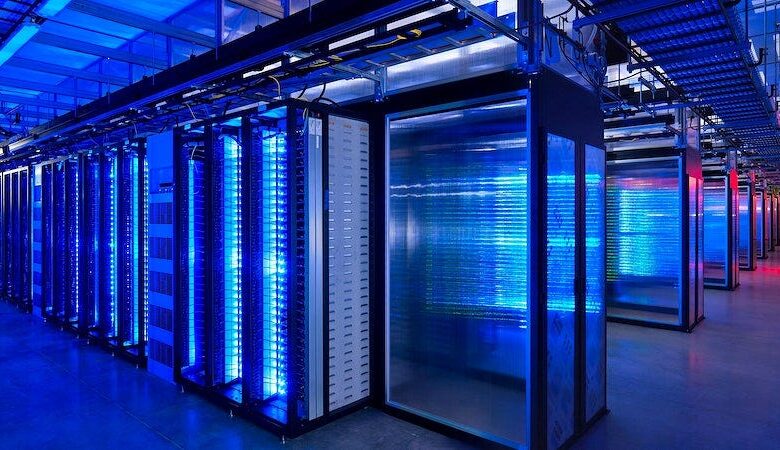The Critical Role of Uninterruptible Power Supplies in Safeguarding Data Center Operations

Understanding Uninterruptible Power Supplies (UPS)
In our digital-dependent society, the stability of data centers is essential for businesses and their customers. At the heart of data center infrastructure is the Uninterruptible Power Supply (UPS), a device that provides emergency power and protects against power surges and fluctuations that can be just as damaging as complete outages. The importance of a reliable data center UPS system cannot be overstated: it is the lifeline that guarantees operational continuity and data integrity during electrical instability.
It’s not simply about having a power backup; modern UPS systems shield against irregular power that can cause insidious damage to sensitive computer equipment. They range from essential standby devices activated only when power is lost to sophisticated online systems that regulate the quality of power delivered to critical infrastructure. UPS technologies aim to seamlessly switch to alternative energy in mere milliseconds, a swift response crucial for mission-critical environments.
Organizations today demand UPS solutions that are reliable and flexible enough to grow alongside their evolving needs. Different environments require different UPS configurations, such as offline, line-interactive, or double-conversion UPS systems, each providing varying levels of protection and operational efficiency. Making the correct choice involves understanding the business’s power requirements and how best to shield its digital assets from power-related risks.
The Consequences of Power Outages in Data Centers
Every organization that relies on digital infrastructures knows that a power outage represents one of its most significant risks. When power goes down, even for a few seconds, it can trigger server reboots, data corruption, or—worst cases—data center fires due to electrical overloads when power returns. These incidents can fracture the spine of a business, leading to operational paralysis and severe financial repercussions. Indeed, studies have shown that downtime can cost companies thousands, if not millions, of dollars, depending on the scale and duration of the outage. Beyond monetary losses, one must not underestimate the potential damage to the company’s reputation, which is often immeasurable and more challenging to repair.
A well-implemented UPS system serves as an effective countermeasure to these risks by providing seamless power protection. Its presence in the data center ensures constant availability, keeping critical operations online and protecting sensitive equipment from the abrupt changes in energy supply. Moreover, using advanced UPS systems as part of a comprehensive risk management plan is increasingly seen not as an expense but as a critical investment in long-term business resiliency.
Design and Redundancy: Building a Reliable UPS Infrastructure
The architecture of a resilient UPS system is grounded in the principle of redundancy, which requires that every essential component has a backup. Liberal application of redundancy makes the UPS system resilient, but it also necessitates careful planning to optimize resource allocation and avoid unnecessary expenditure.
Scalability is another critical aspect of UPS infrastructure design. As organizations grow, their data consumption, and by extension, their power requirements, also increase. A scalable UPS system can accommodate this growth without causing disruptions or requiring extensive overhauls. By anticipating future expansion during the initial deployment of a UPS, data centers can save on future costs and complexities. The upshot is a power infrastructure that can grow in step with the business, maintaining reliability without stunting development.
Energy Efficiency and Green UPS Solutions
With the spotlight on sustainability, the data center industry is transitioning towards ‘greener’ UPS systems that offer improved energy utilization without sacrificing reliability. These new UPS technologies, optimized for energy efficiency, actively reduce electricity consumption and carbon emissions, aligning data center operations with eco-friendly initiatives. Innovations such as energy-saving operating modes, transformerless designs, and variable module capacity safeguard against power variations and operate with excellent energy stewardship.
By adopting green UPS solutions, data centers recognize the potential for significant cost savings and improved environmental impact. For example, eco-mode operations allow UPS devices to run more efficiently, reducing power losses and lowering cooling requirements. This conservational yet cost-effective approach reflects an emergent philosophy where environmental responsibility dovetails with economic prudence, demonstrating that sustainable practices can go hand-in-hand with operational excellence.
Choosing the Right UPS for Your Data Center
Choosing a UPS system is a consequential decision for any data center. Considering current electrical demands, potential future growth, budget constraints, and physical space limitations, it’s a multi-faceted problem to solve. Furthermore, the total cost of ownership comes into focus as decision-makers contemplate the upfront cost of the UPS and the long-term costs associated with its operation. Factors like efficiency, maintenance expenses, and the potential for expansion must be weighed to discern the most reasonable selection.
Identifying the appropriate UPS solution involves understanding the criticality of the applications it will support and the power load it needs to sustain. This step is essential for smooth daily operations and the organization’s ability to scale effectively and remain competitive. The perfect balance is a system that fulfills present-day requirements while remaining adaptable to tomorrow’s growth without incurring prohibitive expenses.
The Role of UPS in Disaster Recovery Planning
Disaster recovery plans are designed to secure business continuity when facing disruptions, natural calamities, or technological failures. Within this framework, the role of UPS systems transcends simple power backup; they are instrumental in facilitating an orderly response to emergencies. Implementing these systems within the more extensive disaster recovery and business continuity strategies ensures a timely and managed switch to emergency power, supporting critical processes and mitigating the cascade of failures that can occur during a power event.
Moreover, including UPS systems in disaster recovery plans is more than just having backup power. It’s also about leveraging UPS’s capability to seamlessly transition between power sources, minimize downtime, and maintain operational integrity despite unforeseen disasters.



